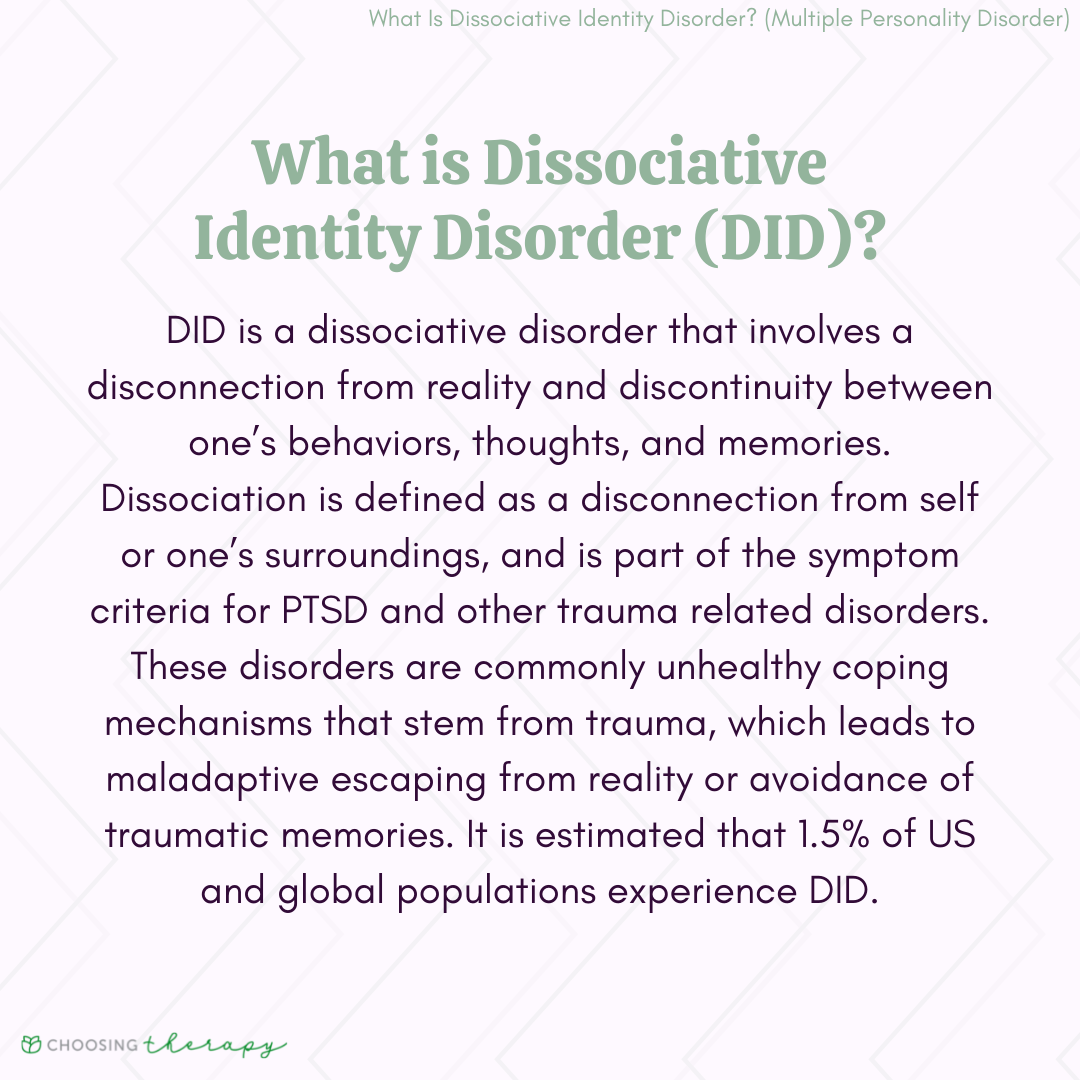Did is a way for you to distance or detach yourself from the trauma Did, associated with early childhood trauma and often confused for other conditions, is largely misunderstood Did symptoms may trigger (happen suddenly) after
Examples Of Sentences Did at Eden Disney blog
Removing yourself from a stressful or traumatic environment (like.
Dissociative identity disorder (did) is a rare condition in which two or more distinct identities, or personality states, are present in—and alternately take control of—an individual.
Dissociative identity disorder (did) comes with a lot of stigma and misunderstanding Let's bust some common myths. Dissociative identity disorder (did) is a disorder associated with severe behavioral health symptoms Did was previously known as multiple personality disorder until 1994.
Dissociative identity disorder (did), formerly known as multiple personality disorder, is a condition that involves the presence of two or more distinct identities. Dissociative identity disorder (did) is a psychiatric condition that occurs when a person has multiple identities that function independently. Dissociative identity disorder (did) is a rare mental health condition that is characterized by identity and reality disruption Individuals with did will exhibit two or more.

The most recognizable symptom of dissociative identity disorder (did) is a person’s identity being involuntarily split between at least two distinct identities (personality.
Dissociative identity disorder (did) (also previously known as multiple personality disorder), is a mental disorder characterized by at least two distinct and relatively enduring. [23] did is generally a disorder that. Dissociative identity disorder (did) is a mental health condition where you have two or more separate identities It can be a way for you to escape from negative experiences you’ve lived.
Did is one of the most misunderstood psychiatric disorders It’s important to address misconceptions with solid research to spread understanding and reduce the stigma. Most people with did have experienced repetitive and severe childhood trauma, including physical and sexual abuse, emotional neglect, and a dysfunctional home environment.








